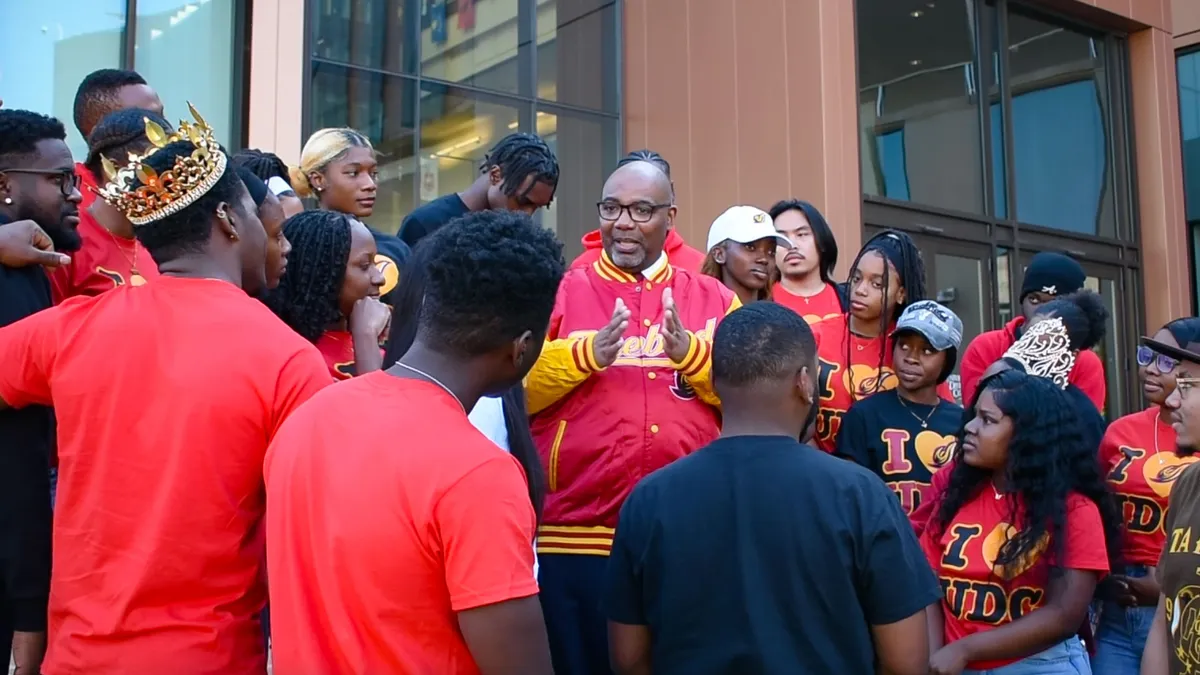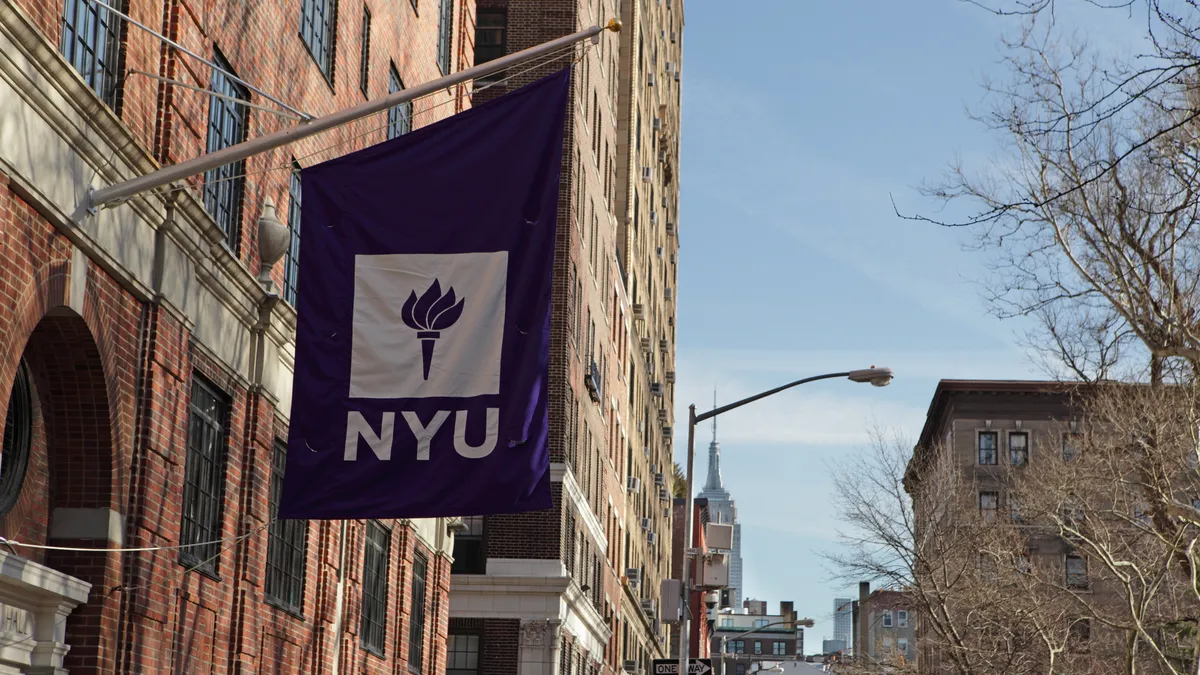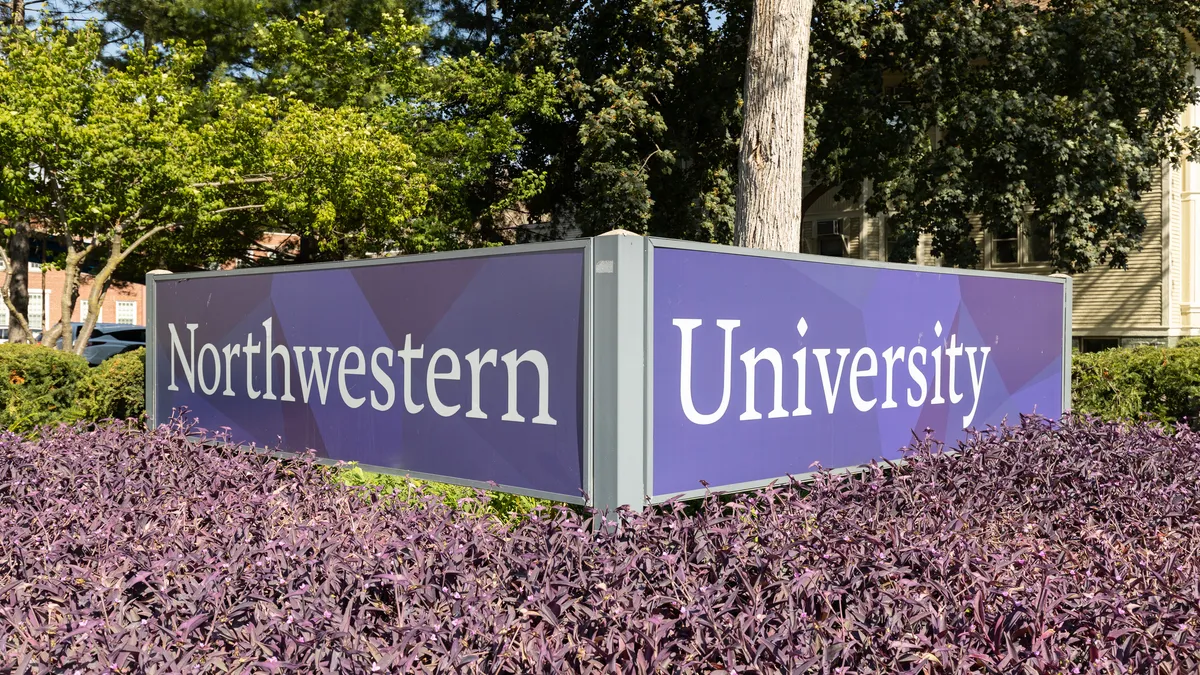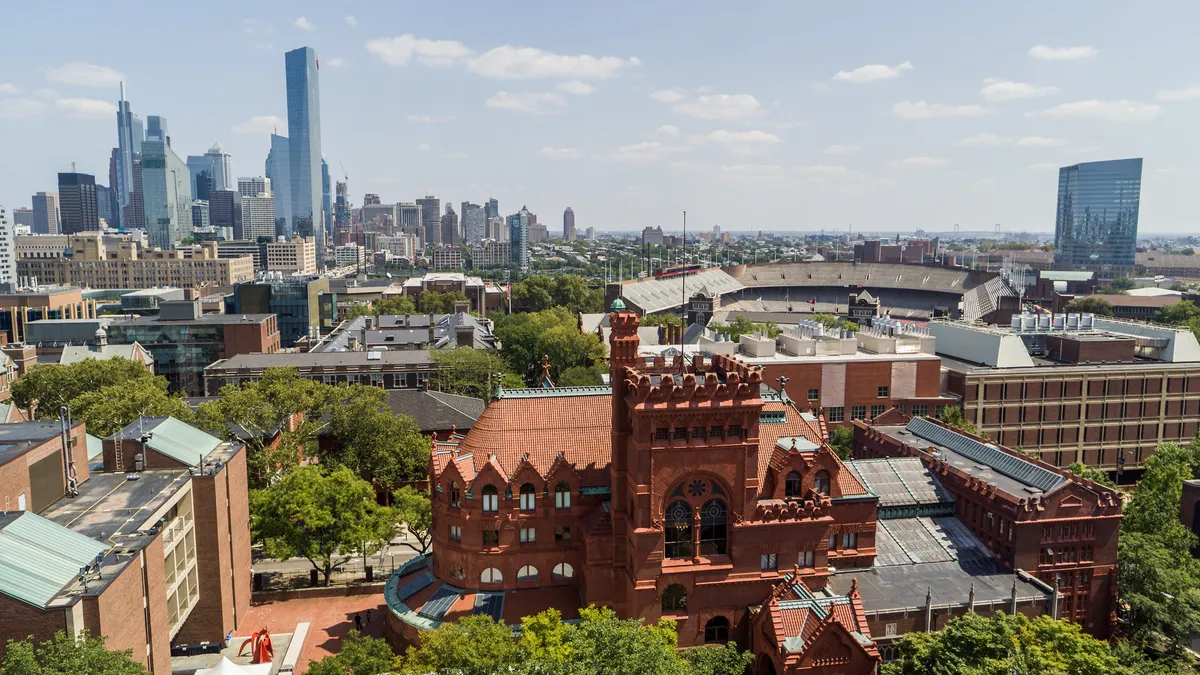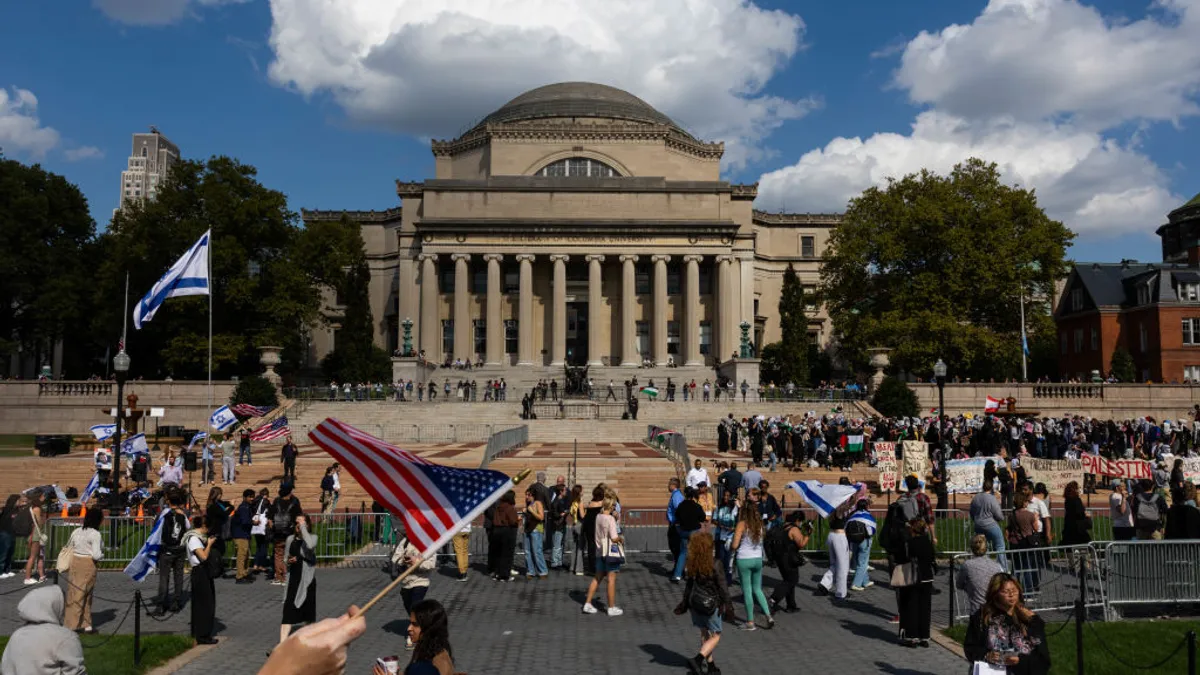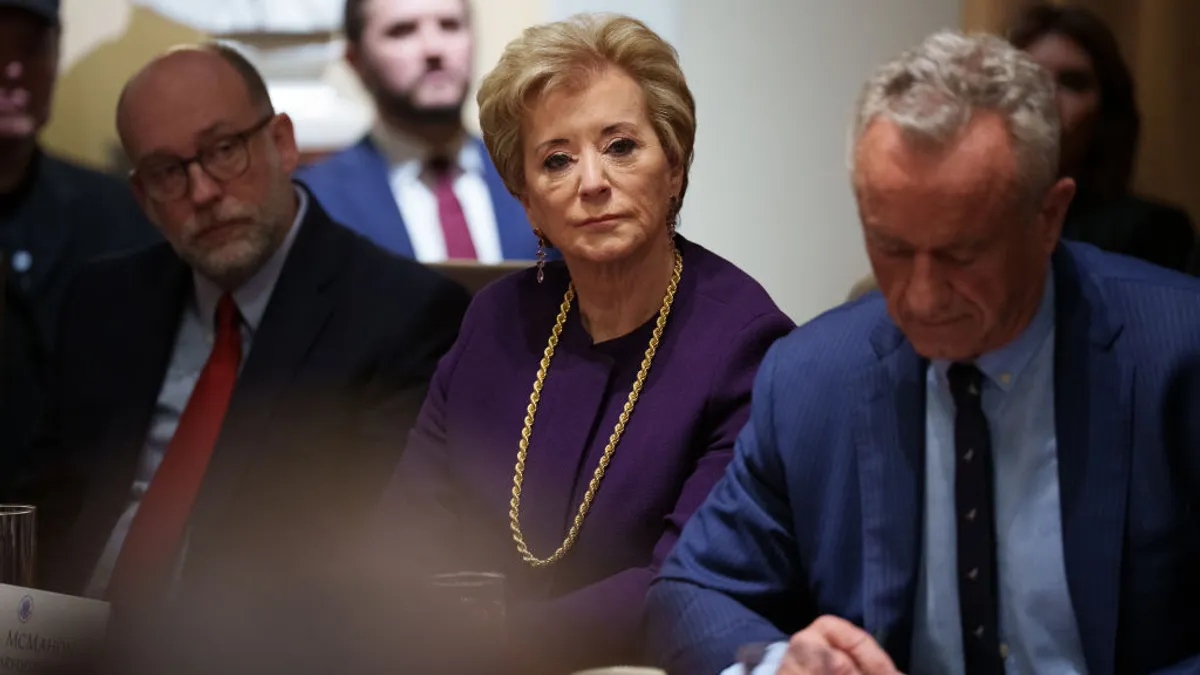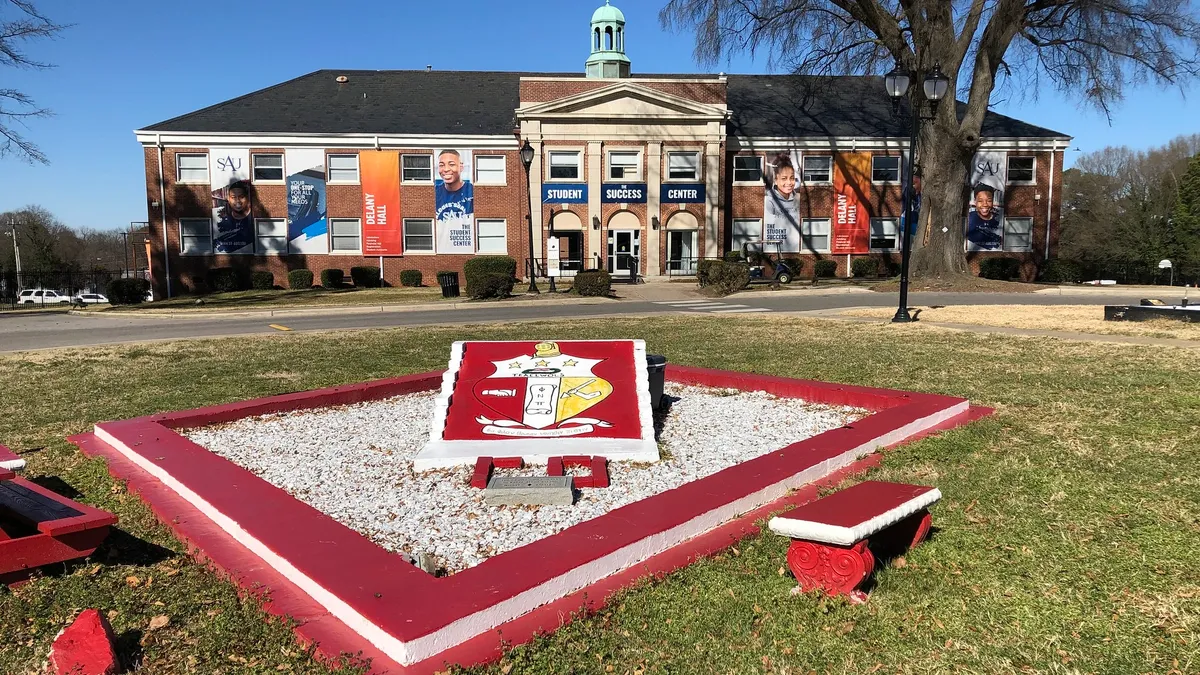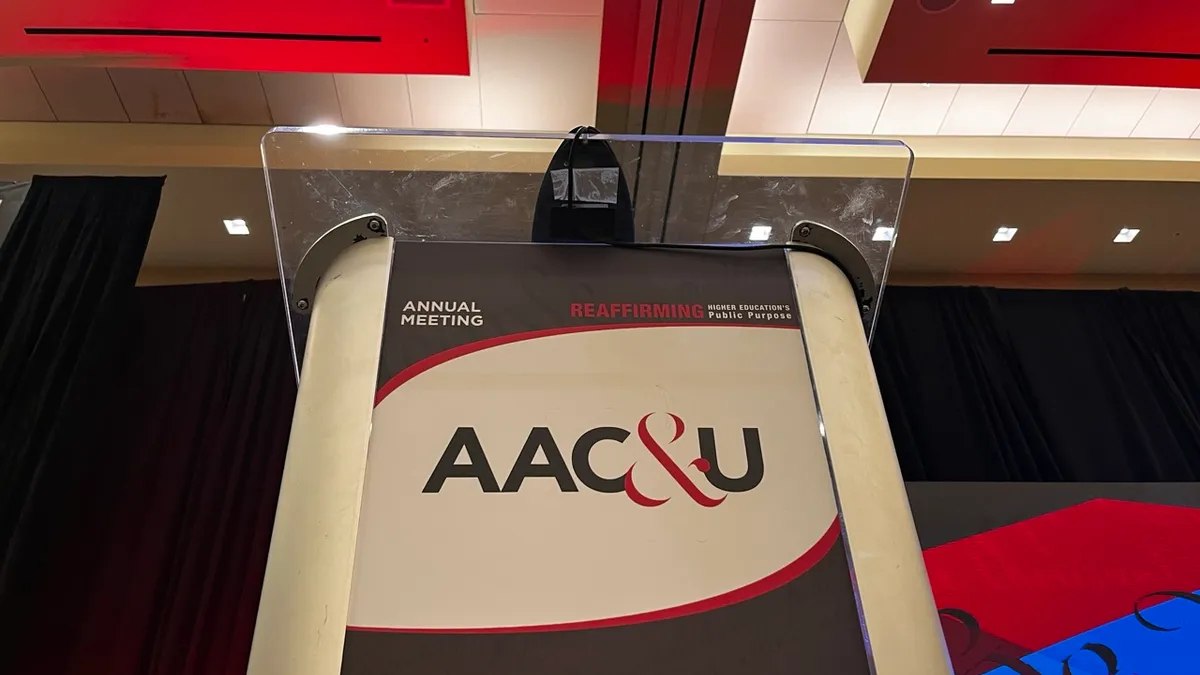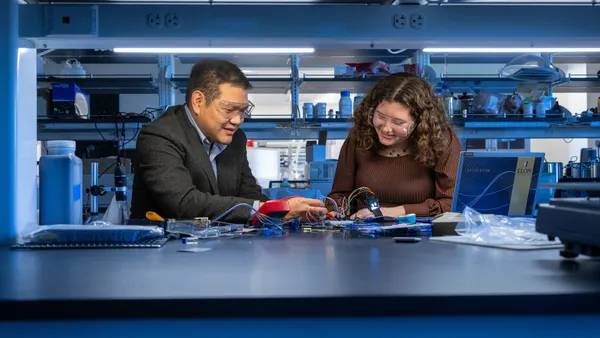Maurice Edington, president of the University of the District of Columbia since August 2023, wants to make it a hard choice for local high schoolers not to stay in Washington and attend the public institution after graduating.
“Our strategy is to evolve and develop as an institution, so that our reputation is that we are the District's high quality, affordable and accessible university,” he said.
It’s a pitch that the public historically Black institution and its past leaders have made before. Under Edington — who joined UDC after serving 21 years in administrative roles at Florida A&M, a fellow HBCU — the university has just released its latest strategic plan for achieving that goal.
It contains nine broad objectives, which Edington acknowledged is a lot for a strategic plan.
“We are not trying to improve incrementally,” he said. “I’m not saying that the institution is in bad shape, but we have an ambitious vision for the future. And it’s my opinion — and to the core of my soul, I believe this — that you have to be ambitious and aggressive if you want to make quantum leaps.”
But while the plan has nine priorities, one matters above all and serves as the lodestar for the others. And it’s one that guides many other institutions.
“There is really only one priority: student success,” Edington said.
UDC wants to start looking like a state flagship
UDC’s history dates back to 1851 with origins as a teachers' college, and from day one it focused on serving the District's Black community. It became a full university in 1976, when three institutions merged into one. Today UDC houses both a research university and a community college. As of spring 2024, it enrolled 3,708 students across the institution, about 2,100 of whom were Black.
And now, with a newly launched strategic plan under Edington, UDC aims to become “a national model for urban student success.”
For the university, that means raising second-year retention rates to 80% by 2029, which would be a 14 percentage-point increase from its baseline, and boost its graduation rate by 25 percentage points, to 65%. It also aims to roughly double the number of degrees it awards to 1,500 a year.
But getting to those and other goals will mean thoroughly revamping the university’s operations.
UDC's enrollment has dipped over the past two decades
High on the list is establishing a student success center. Edington said the planned center will combine multiple services into a one-stop hub including academic and career advising, health and other functions.
Advising itself is set to change, with the university shifting from a hybrid model that combines professional full-time advisers with faculty playing that role, to a purely professional staff that would work with students throughout their college careers.
More broadly, Edington wants to roll out a universitywide “student success framework,” higher education jargon for a bundle of initiatives to boost outcomes.
The framework his team developed includes nearly 30 separate initiatives and programs, everything from curriculum redesign and mandatory advising sessions to expanded internships and early warning analytics to help identify and support at-risk students.
“There is really only one priority: student success.”

Maurice Edington
President, UDC
Tied up in UDC’s student success push — as well as in its broader efforts to raise its profile in the District and beyond — is the possibility of building the university’s first dedicated student housing. Edington calls this piece “critical.”
“Many students leave the District to go to the local schools, so they're not going away from home,” he noted. “They're just going 10, 15, 20 miles away, but what they're getting is an on-campus residential experience.”
UDC is the rare public university without a residence hall. However, it does lease nearby apartments — roughly 50 units — for students.
Many in the region view the university as a commuter school, Edington said. About three-fourths of its 1,407 undergraduates this past spring were D.C. residents, as were more than 80% of its 1,738 community college students.
For many students, commuting means they can't spend much time on campus beyond their classes. “I didn't realize, from a student perspective, until very recently, how much effort goes into getting to campus,” Edington said.
But Edington also points to a bigger picture, tying college residence to college success. “Students who stay in residence halls have higher retention and graduation rates than those that don't. That’s well-established data,” he said.
Research going back to the 1990s has associated living in residence halls with positive outcomes for students, including the metrics Edington mentioned as well as the sense of community that is built.
He added, “We draw a lot of students from underserved communities who don't have the strongest structures at home and support structures, and so they need to be in a more nurturing, supportive environment in the evenings, on the weekends.”
Constructing a residence hall is Edington’s No. 1 capital priority.
He’s been trying to spread the message of the potential benefits among stakeholders. D.C.’s government — which plays an intimate role in the life of the university — has put up $1 million to conduct a student housing feasibility study.
Financing options likely come down to capital appropriations from the District, a partnership with private real estate investors, or a combination of the two, Edington noted.
In a best case scenario, he said, UDC could break ground within two years.
Reputation: An ‘issue of concern’
When UDC says in its transformation plan that it wants to become a “world-class flagship university,” implied is the idea that that institution is not one already. It currently ranks No. 23 among HBCUs — up a notch from last year — and No. 147 among regional universities in the North on U.S. News and World Report’s college rankings.
In the introduction to the strategic plan, titled “Delivering on the Promise,” UDC is explicit about this: “Reputation — a factor that is easy to cite but harder to define — has been an issue of concern for UDC in the past; the university continues to wrestle with problems of perception, particularly with District natives who recall years of short-term leadership, underfunding and stagnant programs.”
That’s a tough list of challenges to overcome. While the university may be the only public institution in D.C., it has some pretty heavy competition for top students among private Washington colleges.
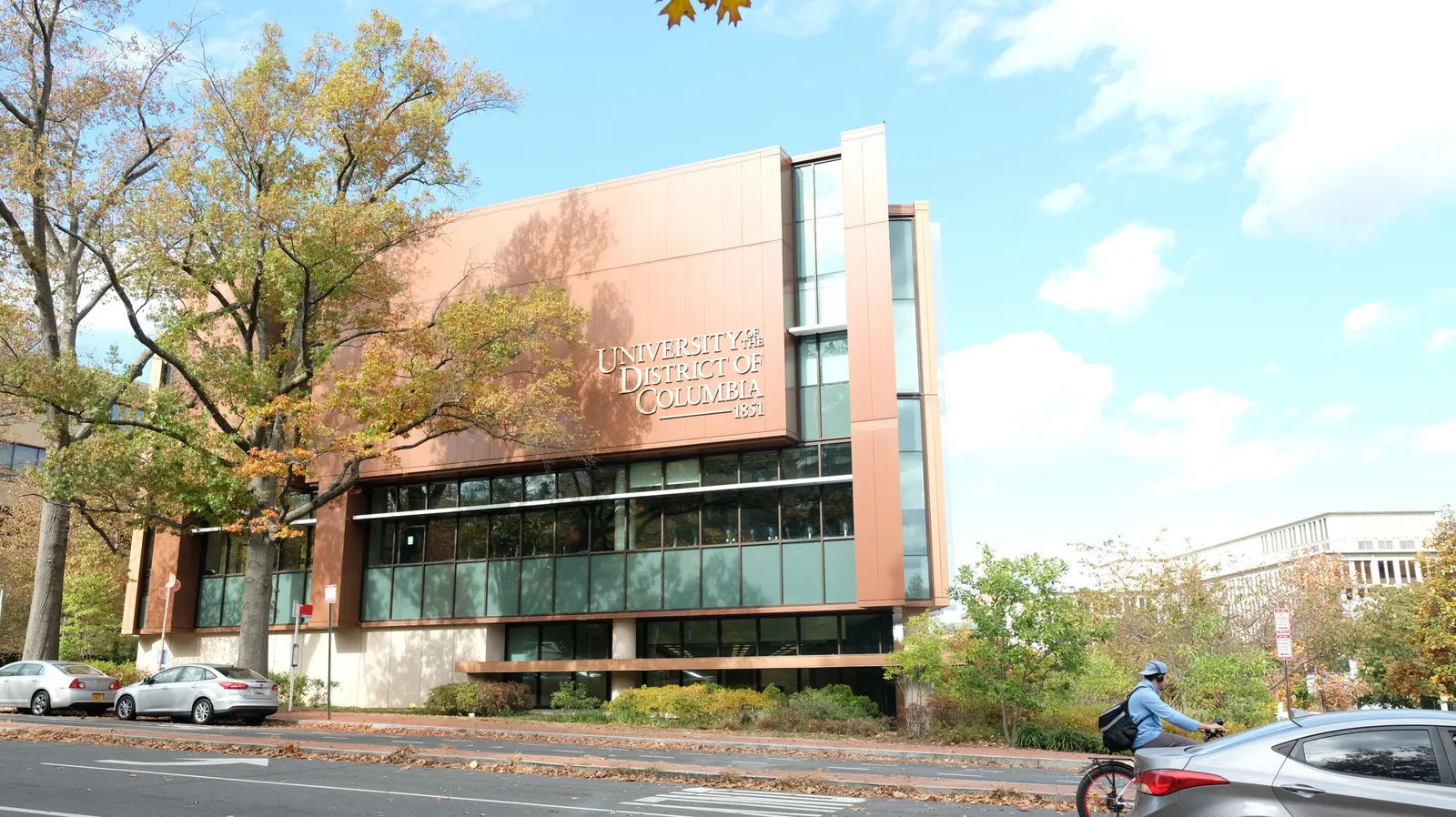
Those include nationally known heavyweights Georgetown University, George Washington University and Howard University. Howard is ranked No. 2 among the nation’s HBCUs, behind Atlanta’s Spelman College on U.S. News’ rankings.
UDC also faces competition from public universities in neighboring Maryland and Virginia, where HBCUs — including Morgan State University and Hampton University, among others — draw students that otherwise might go to UDC. While Washington residents don’t qualify for in-state tuition in the nearby states, they can get tuition assistance through a grant program meant to expand higher education options for District denizens.
“You have to be ambitious and aggressive if you want to make quantum leaps.”

Maurice Edington
President, UDC
At a mid-November event celebrating the UDC plan's launch, Edington highlighted the double meaning of “promise” in the plan’s name.
“These words were very carefully chosen,” he said. “‘Promise’ is synonymous with commitment. It also means potential, and so to deliver on the promise is to fully commit to and fully realize our immense potential as an institution,” he told the local politicians and university and student leaders in attendance.
Reputation, while abstract, can have a tangible impact, not least of all in recruiting. The strategic plan tackles that issue partly with communication: new comprehensive branding and outreach efforts, as well as a new university website.
Also key to reputation in the higher ed community: UDC is looking to boost its research profile and be designated by Carnegie Classifications as an R2 institution, denoting high levels of research activity.
In an interview, Edington expressed hope that UDC’s very location could widen its appeal to prospects. By dint of its historical setting, place among the halls of power, and international importance, the District can be a draw for top students.
“With our private school peers, one of the keys to their success is the location,” Edington said. “We have a lot of students nationally, I think, who want to come to D.C. They can't all go to Howard University if they're looking for an HBCU experience, right?”
An ‘urgency’ to educate
Meanwhile, UDC faces the same balancing act that many other public universities do, that of trying to raise their profile nationally and even internationally while still serving the regions that house and fund them.
UDC’s status as an HBCU is critical to fulfilling both objectives.
This came home when, at the celebration of the new plan — speaking to a mostly Black audience of perhaps 100 people — Edington drew little reaction when he noted the university’s status as D.C.’s only public university But when he followed it with “and a proud HBCU,” the room broke into enthusiastic applause.
Across the country, HBCUs are typically hardworking engines of regional and individual economic advancement. Nationwide, they generate $16.5 billion in economic impact annually and increase graduates' lifetime income by 57%, according to the latest UNCF study on the sector.
And regional public HBCUs like UDC “represent a cornerstone of the HBCU landscape,” as a 2020 paper by HBCU scholars Felecia Commodore and Nadrea Njoku noted. They “consistently outperform their regional predominately white counterparts with available resources and providing services to Black students,” they wrote.
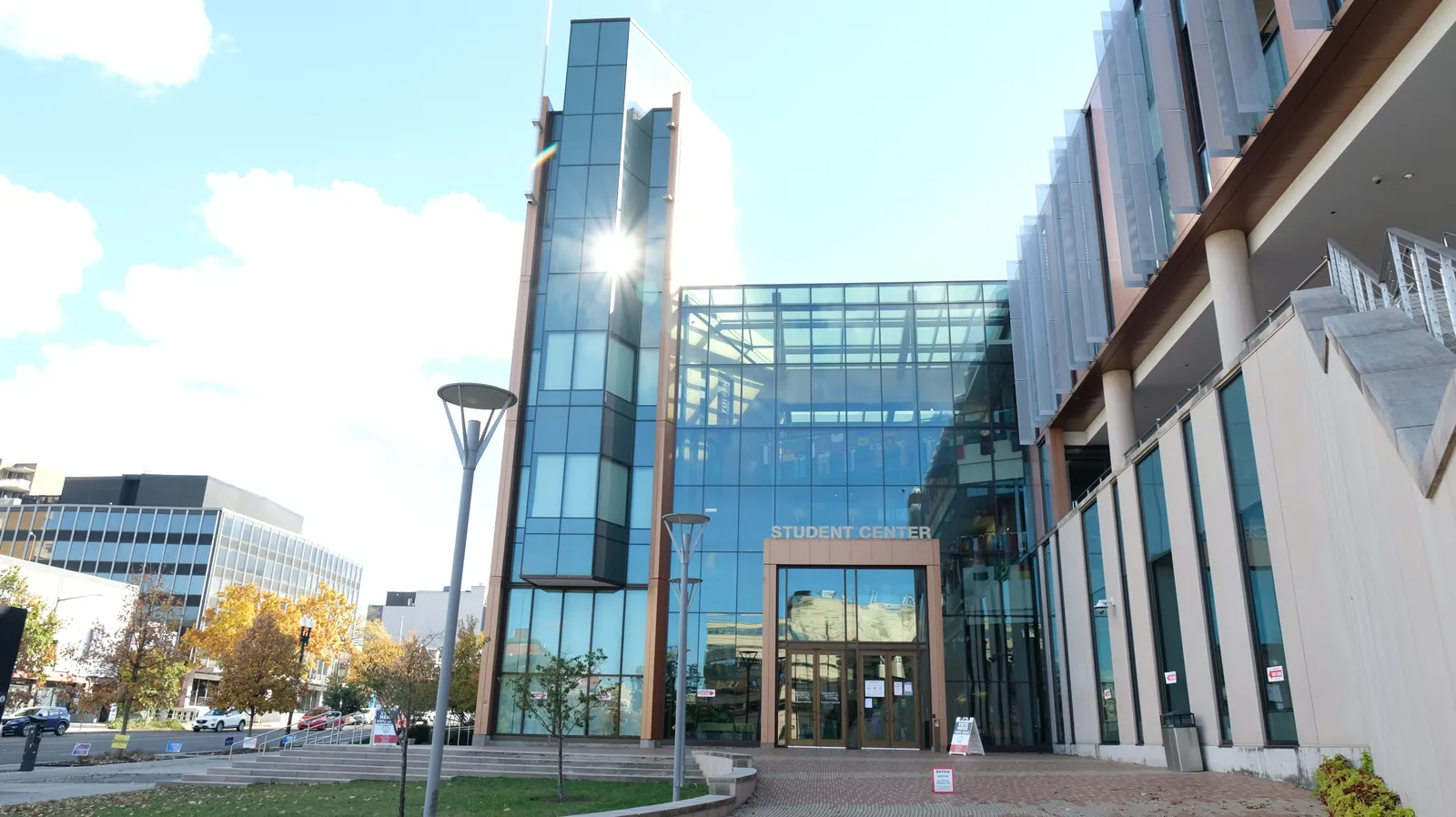
The 752 UDC students who graduated in 2021 will make an estimated $2.1 billion over their collective lifetimes — 51% more than they would have without their credentials, according to UNCF.
HBCUs have typically been “punching above their weight,” providing higher ed access to historically marginalized students who lack the resources of their peers, UNCF has noted.
Still, the sector has been underfunded for decades. Moreover, no HBCU has an endowment worth $1 billion, as Njoku, who is the former assistant vice president of UNCF’s Frederick D. Patterson Research Institute, noted in an interview. Holdings of top public and private universities, meanwhile, can run into the tens of billions of dollars.
HBCUs are able to do what they do through their approach to education, in Njoku’s view. Many have relatively low student-to-teacher ratios and use what she calls “intrusive advising” to detect early warning signs that a student is struggling — something that UDC plans to build out as part of its student success blitz.
She also pointed to innovative pedagogical techniques, such as Xavier University of Louisiana’s approach to its pre-med program, where it breaks learning down into modules that help students get up to speed on complex scientific concepts incrementally.
HBCUs also frequently dig into the educational and programming needs of their local market, Njoku said. There again, UDC has made that a priority in its strategic plan under Edington, with the goal of striking up partnerships with local employers and focusing programs on needed skills in the region.
Beyond those specifics, Njoku said HBCUs often do their work with an educational “urgency” other institutions lack.
“These institutions were founded in the corners of barns under candlelight in the fear that they would be killed because they were reading,” she said. “That fear resonates to this day. These institutions educate students with as much seriousness and urgency as they did on the first day they were founded. That's going to shape everything you do.”
Funding transformation (after a history of underfunding)
In 2017, The Washington Post — UDC’s hometown newspaper — penned an editorial mulling whether the university could turn itself around. It referenced a promising new leader in Ronald Mason Jr., a by then three-year-old strategic plan, a spotty record of results, a “dismal” graduation rate and a realization that UDC needed to serve local market needs and couldn’t be “all things to all people.”
Despite the significant improvement since then, the litany all rings a little familiar today in 2024. For instance, between 2017 and 2022 UDC’s overall graduation rate rose nearly 20 percentage points to reach 35%, a number that still leaves wide room for improvement. For students seeking bachelor’s degrees, the figure hit 54% — better, but still well below nearby University of Maryland’s 89% graduation rate.
By August 2023, UDC’s overall graduation rate fell again, by 9 percentage points, while its bachelor’s graduation rates dipped by 14 percentage points, according to the latest federal data.
One thing UDC has going for it is support from D.C. government leadership. At the strategic plan unveiling event in November, Edington said he had heard Washington Mayor Muriel Bowser speak glowingly of the institution “in places where you didn't know I was there.”
For her part, Bowser called UDC a key piece of Washington’s education system. “UDC represents a lifelong commitment, certainly, from me and our city to support learning opportunities around a D.C. resident’s whole lifespan,” she said at the event.
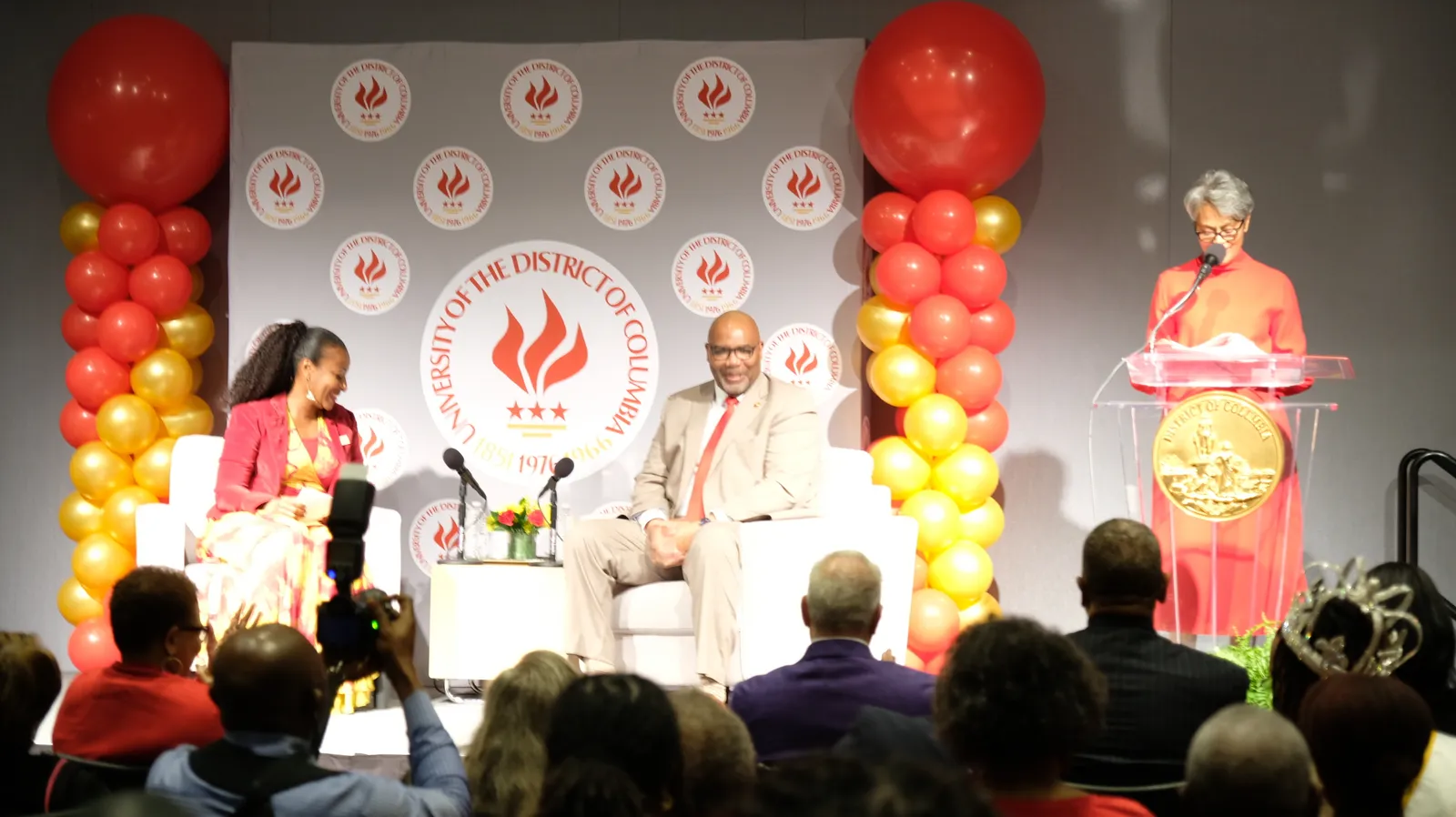
And D.C. is putting money where its mouth is. Along with funding the housing study, the city is spending another $1.1 million to bring in additional academic advisers and set up the new student success center. It is also making a $100 million capital investment into a new library and athletic field at the university.
“We asked the District for support. The mayor and the council said, ‘Yes, that's important to us. Here's some resources to do it.’” Edington said about the $1.1 million in funding. “But we can't rely on that process for all of our needs. … We can’t say, ‘The District should support every single initiative.’”
And so the strategic plan calls for more than tripling UDC’s roughly $3 million in annual donor fundraising — yet another ambitious goal. To that end, the university established a new head of philanthropy role and is building new structures to bolster fundraising. Edington hopes that donors can help support the university’s student success and retention initiatives through scholarship funds and other means.
Adding to the challenge is the D.C. area's high cost of living, which Edington acknowledged makes it hard to pay competitive salaries to faculty and staff. This is another area where he said fundraising could help.
At the same time, the economic setting could be a benefit. Edington noted UDC’s potential for auxiliary revenue is much higher than at Florida A&M, his previous institution.
Specifically, UDC sits in a bustling area with retail space it can rent out commercially. The university’s president sees other ways to maximize revenue, including by opening its campus for others to host events. Those monies, Edington said, could be reinvested back into the institution’s strategic priorities.
Even with current levels of funding, Edington said UDC could maintain its current trajectory and see some enrollment growth and improvement.
“If we never got an additional dollar, we would still improve,” he said. “But the transformative growth and evolution that we need is going to require more investments.”



